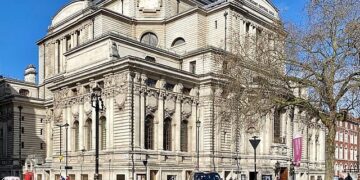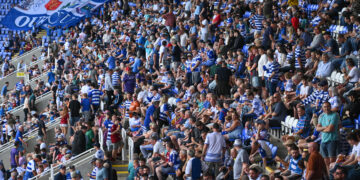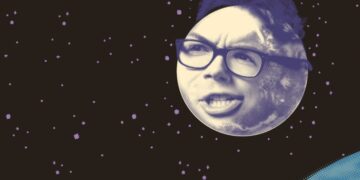WILL you take your umbrella to Wokingham Theatre to see its latest production?
Will March storms rage, or will spring weather bring warmer evenings and the possibility of removing at least one layer of winter clothing?
It’s just a question of comfort for us now, but in 1944 the weather and its unpredictability posed a serious dilemma for those in charge of orchestrating World War II.
They had to be absolutely certain of what the skies would offer in order to carry out one of the most important wartime manoeuvres.
Pressure, written in 2014 by David Haig, is based on true events surrounding the launch of Operation Overlord.
It looks at the events of the 72 hours leading up to D-Day, and imagines the heated discussions between senior British Meteorologist James Stagg, and American weatherman Irving P. Krick, who both interpreted differently the weather forecasts that would decide when and how Allied forces would invade continental Europe from Britain.

Jess Edwards, director of Pressure, said: “This is a story about ordinary people doing ordinary jobs in extraordinary circumstances.
“Stagg and Krick, from very different backgrounds, couldn’t agree on what each other saw in the weather forecasts.
“But the play isn’t a simple study of who was right and who was wrong – it also looks at a clash of culture and personality.
“Stagg was an unremarkable meteorological reporter at Kew Gardens before being pulled in to help with the war.
“Whereas Krick was the first celebrity weatherman – confident, and influential.”
Reading the weather drives the narrative of the story.
It has presented an interesting challenge for the cast, who have had to learn how to interpret weather charts.
“Professor Chris Merchant from The University of Reading’s Meteorology Department came to give us a masterclass on how to read the charts that Stagg and Krick were using,” said Jess.
“He helped us to understand what the charts say, and that completely changed the way we had been handling one scene in particular.
“When Chris explained what a weatherman would know from one of our maps, we realised that this would critically affect the way they would deliver their lines, and that despite saying they were 100% confident in their prediction, they would, in reality, be feeling perhaps 4% sure.”
The maps are printed on a very large scale, and have been the production’s most costly purchase.
The actors have also had to get to grips with using technical weather forecasting equipment: a barometer, barograph, and Stevenson screen.
Jess hopes audiences will leave the theatre with a greater understanding of what the wartime generation did and the contribution they made.
“We tend to think of them as being different, but in reality they were very like us – ordinary people in very difficult circumstances, doing what they needed to do,” she said.
“Their story shows us that even when everything appears to be stacked against us and the pressure is high, we can still rise to the occasion and do our best – that’s what these people did, and it had such a massive impact.
“Who would have thought that a weather report could have played such a critical role in one of the biggest turning points of the entire wartime conflict?”
Pressure can be seen at Wokingham Theatre, from Thursday, March 20, through to Saturday, March 29, with the exception of Sunday.
Performances begin at 7.45pm, with the theatre bar open from 7pm.
Tickets cost £16, available from the theatre website.
For tickets and information, visit: wokinghamtheatre.org.uk














































